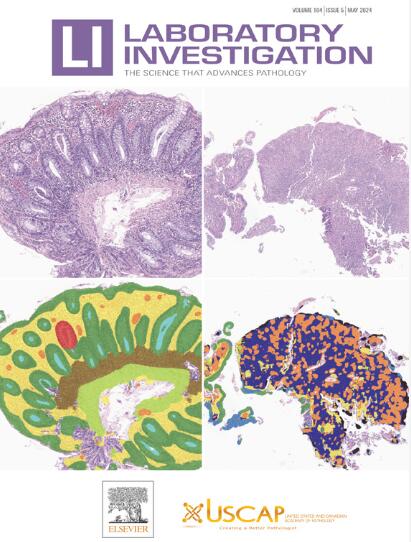急性川崎病儿童的单克隆抗体在过去50年的致命病例中发现了一个共同的抗原靶点。
IF 4.2
2区 医学
Q1 MEDICINE, RESEARCH & EXPERIMENTAL
引用次数: 0
摘要
川崎病(KD)是一种独特的幼儿发热性疾病,可导致冠状动脉瘤、心肌梗死、动脉瘤破裂和猝死。其流行病学特征,包括发病年龄小、很少复发以及存在流行病和暴发等,都表明该病的病原体是单一的传染性病原体。最近,在大流行缓解期间,全球 KD 病例有所减少,这证明病原体是通过呼吸途径传播的。然而,数十年来的大量研究表明,KD 的病因无法与目前已知的任何传染病病原体联系起来。我们以前曾在致命性 KD 患儿的支气管上皮细胞中发现了胞浆内包涵体(ICI),并发现了一种针对特异性蛋白表位的趋同浆细胞衍生抗体反应,支持一种主要的呼吸道致病因子。在此,我们报告了使用从12名急性KD患儿的单个外周血浆细胞中制备的KD单克隆抗体扩增池进行免疫组织化学和表位结合的结果。我们从这12名患者中发现了一种或多种能识别KD支气管上皮细胞中ICI的单克隆抗体。使用一种具有代表性的单克隆抗体,我们在 20/20 名患有致命 KD 的儿童(其中 10 名来自美国,10 名来自日本)中检测到了 ICI,而在 19/20 名婴儿对照组中则没有检测到 ICI(P<0.05)。本文章由计算机程序翻译,如有差异,请以英文原文为准。
Monoclonal Antibodies From Children With Acute Kawasaki Disease Identify a Common Antigenic Target in Fatal Cases Over 5 Decades
Kawasaki disease (KD) is a unique febrile illness of young children that can result in coronary artery aneurysms, myocardial infarction, aneurysm rupture, and sudden death. The epidemiologic features, including the young age group affected, the rarity of recurrence, and the presence of epidemics and outbreaks, point to a single infectious causative agent. The recent decrease in KD cases worldwide during pandemic mitigation supports transmission of the agent via a respiratory route. However, substantial research over decades has shown that KD etiology cannot be linked to any currently known infectious agent. We previously identified the presence of intracytoplasmic inclusion (ICI) bodies in the bronchial epithelium in children with fatal KD and a convergent plasmablast-derived antibody response to a specific protein epitope, supporting 1 predominant respiratory causative agent. Here, we report immunohistochemistry and epitope binding using an expanded pool of KD monoclonal antibodies prepared from single peripheral blood plasmablasts from 12 children with acute KD. We identified 1 or more monoclonal antibodies from each of the 12 patients that recognized ICI bodies in KD bronchial epithelium. Using a representative monoclonal antibody, ICI bodies were detected in 20 of 20 children with fatal KD across 5 decades, 10 from the United States and 10 from Japan, and were absent in 19 of 20 infant controls (P < .001). We also found that all 12 children with acute KD generated plasmablast(s) recognizing the previously reported peptide antigen. Taken together, these results point to 1 predominant causative agent of KD across many decades and geographic areas and should direct future KD research studies.
求助全文
通过发布文献求助,成功后即可免费获取论文全文。
去求助
来源期刊

Laboratory Investigation
医学-病理学
CiteScore
8.30
自引率
0.00%
发文量
125
审稿时长
2 months
期刊介绍:
Laboratory Investigation is an international journal owned by the United States and Canadian Academy of Pathology. Laboratory Investigation offers prompt publication of high-quality original research in all biomedical disciplines relating to the understanding of human disease and the application of new methods to the diagnosis of disease. Both human and experimental studies are welcome.
 求助内容:
求助内容: 应助结果提醒方式:
应助结果提醒方式:


